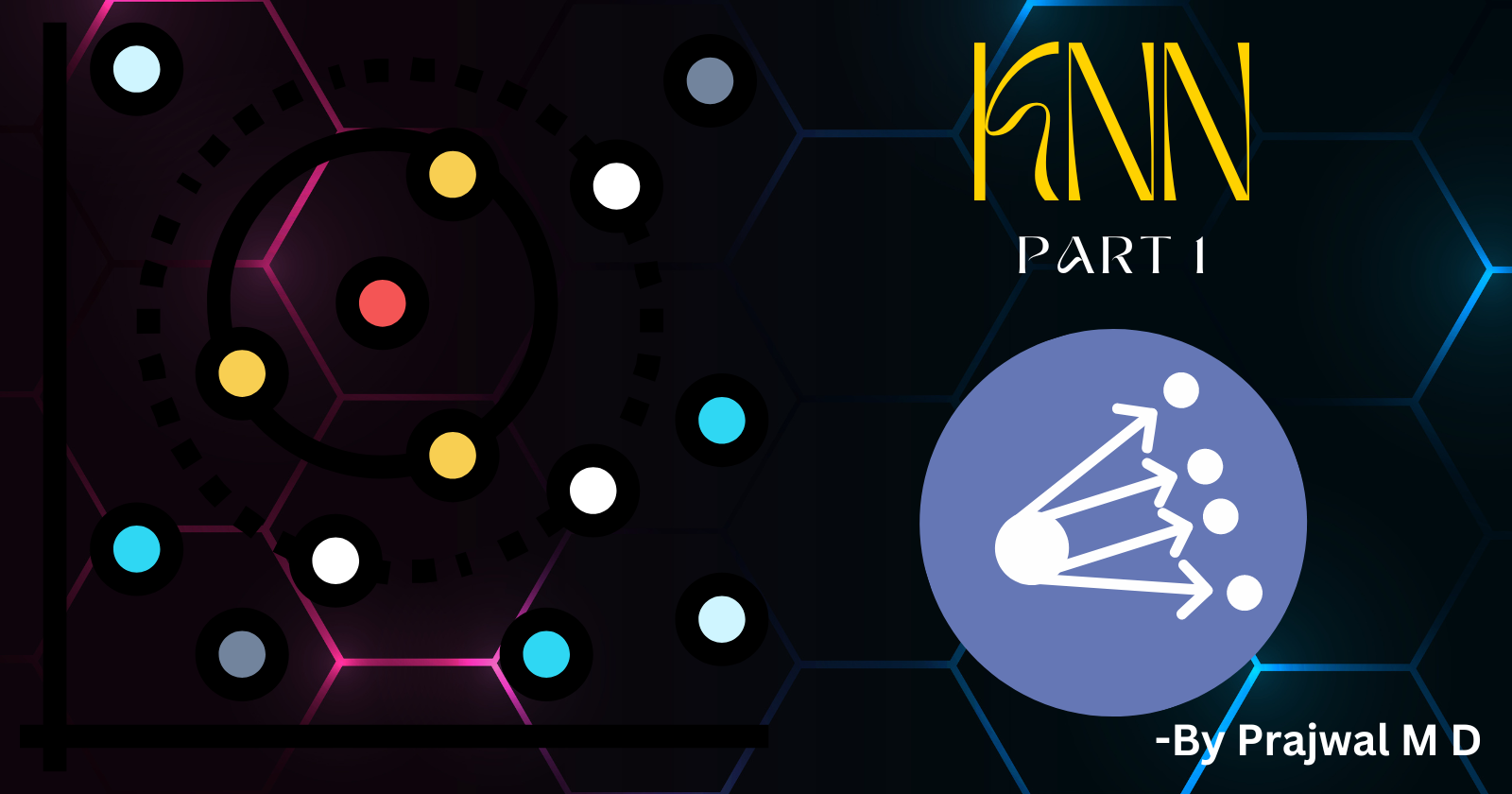Understanding the K-Nearest Neighbors (KNN) Algorithm
 Prajwal M D
Prajwal M D
The K-Nearest Neighbors (KNN) algorithm is one of the simplest and most intuitive machine learning algorithms used for classification and regression tasks. Its straightforward approach makes it a great starting point for beginners in data science and machine learning. In this blog, we'll delve into the details of KNN, how it works, and its applications.
What is K-Nearest Neighbors?
K-Nearest Neighbors is a supervised learning algorithm used for both classification and regression. The core idea behind KNN is to classify a data point based on how its neighbors are classified. In other words, KNN assumes that similar data points exist close to each other.
How Does KNN Work?
Here’s a step-by-step breakdown of how the KNN algorithm works:
Select the Number of Neighbors (K): Choose the number of neighbors, 𝐾K, which will be used to determine the class of a given data point. Common choices for 𝐾K are 3, 5, or 7.
Calculate Distance: Compute the distance between the new data point and all the points in the training data. There are several ways to calculate this distance, with the Euclidean distance being the most common:
Euclidean distance=∑𝑖=1𝑛(𝑥𝑖−𝑦𝑖)2Euclidean distance=i\=1∑n(xi−yi)2
where 𝑥𝑖xi and 𝑦𝑖yi are the feature values of the new data point and a training data point, respectively.
Find K Nearest Neighbors: Identify the 𝐾K training data points that are closest to the new data point.
Assign a Class (for Classification): For classification tasks, count the number of data points in each class among the K nearest neighbors. The class with the highest count is assigned to the new data point (majority voting).
Predict a Value (for Regression): For regression tasks, compute the average of the values of the K nearest neighbors and assign this average as the prediction for the new data point.
Choosing the Right Value of K
Choosing an appropriate value for 𝐾K is crucial for the performance of the KNN algorithm. A small 𝐾K value (e.g., 1) can be noisy and lead to overfitting, while a large 𝐾K value can smooth out predictions too much, leading to underfitting. A common approach is to use cross-validation to determine the best 𝐾K value.
Pros and Cons of KNN
Pros:
Simple and Intuitive: Easy to understand and implement.
No Training Phase: KNN is a lazy learner, meaning it doesn’t require a training phase.
Versatile: Can be used for both classification and regression tasks.
Cons:
Computationally Expensive: KNN can be slow, especially with large datasets, as it requires calculating the distance to all training points.
Sensitive to Irrelevant Features: All features contribute equally to the distance calculation, which can be problematic if some features are irrelevant.
Memory Intensive: Requires storing all training data.
Applications of KNN
KNN can be used in various practical applications:
Recommendation Systems: For recommending products or content based on user preferences.
Medical Diagnosis: Classifying diseases based on patient data.
Image Recognition: Identifying objects or faces in images.
Finance: Predicting stock prices or credit scoring.
Conclusion
The K-Nearest Neighbors algorithm is a fundamental yet powerful tool in the machine learning toolkit. Its simplicity and effectiveness make it a great choice for many practical applications. By understanding its workings, strengths, and limitations, you can effectively apply KNN to solve real-world problems.
Ending
In the next upcoming blog I am gonna explain you regarding how does KNN works using a real dataset be sure to subscribe to my blog to get information regarding these machine learning algorithms.
Quote of the day
Work Hard, Have Fun, Create History.......
Subscribe to my newsletter
Read articles from Prajwal M D directly inside your inbox. Subscribe to the newsletter, and don't miss out.
Written by

Prajwal M D
Prajwal M D
I'm a innovative individual, fervently converting complex challenges into elegantly simple and intuitively seamless designs and developments, skillfully amalgamating Data Analytics and Machine Learning Algorithms".